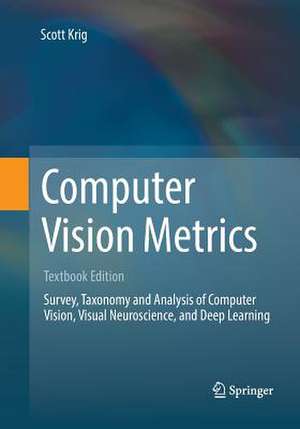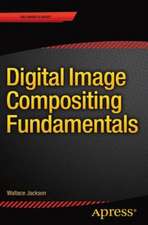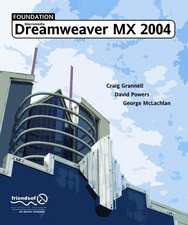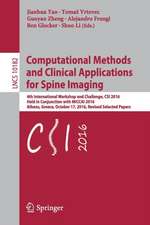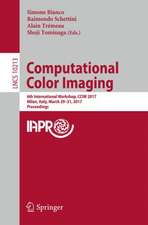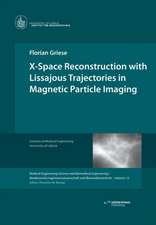Computer Vision Metrics: Textbook Edition
Autor Scott Krigen Limba Engleză Paperback – 14 iun 2018
Based on the successful 2014 book published by Apress, this textbook edition is expanded to provide a comprehensive history and state-of-the-art survey for fundamental computer vision methods and deep learning. With over 800 essential references, as well as chapter-by-chapter learning assignments, both students and researchers can dig deeper into core computer vision topics and deep learning architectures. The survey covers everything from feature descriptors, regional and global feature metrics, feature learning architectures, deep learning, neuroscience of vision, neural networks, and detailed example architectures to illustrate computer vision hardware and software optimization methods.
To complement the survey, the textbook includes useful analyses which provide insight into the goals of various methods, why they work, and how they may be optimized.
The text delivers an essential survey and a valuable taxonomy, thus providing a key learning tool for students, researchers and engineers, to supplement the many effective hands-on resources and open source projects, such as OpenCV and other imaging and deep learning tools.
| Toate formatele și edițiile | Preț | Express |
|---|---|---|
| Paperback (2) | 254.50 lei 6-8 săpt. | |
| Apress – 29 mai 2014 | 254.50 lei 6-8 săpt. | |
| Springer International Publishing – 14 iun 2018 | 557.17 lei 6-8 săpt. | |
| Hardback (1) | 736.04 lei 6-8 săpt. | |
| Springer International Publishing – 4 oct 2016 | 736.04 lei 6-8 săpt. |
Preț: 557.17 lei
Preț vechi: 696.47 lei
-20% Nou
Puncte Express: 836
Preț estimativ în valută:
106.65€ • 115.88$ • 89.64£
106.65€ • 115.88$ • 89.64£
Carte tipărită la comandă
Livrare economică 21 aprilie-05 mai
Preluare comenzi: 021 569.72.76
Specificații
ISBN-13: 9783319815954
ISBN-10: 3319815954
Pagini: 637
Ilustrații: XVIII, 637 p. 331 illus., 139 illus. in color.
Dimensiuni: 178 x 254 mm
Greutate: 1.12 kg
Ediția:Softcover reprint of the original 1st ed. 2016
Editura: Springer International Publishing
Colecția Springer
Locul publicării:Cham, Switzerland
ISBN-10: 3319815954
Pagini: 637
Ilustrații: XVIII, 637 p. 331 illus., 139 illus. in color.
Dimensiuni: 178 x 254 mm
Greutate: 1.12 kg
Ediția:Softcover reprint of the original 1st ed. 2016
Editura: Springer International Publishing
Colecția Springer
Locul publicării:Cham, Switzerland
Cuprins
Image Capture and Representation.- Image Re-processing.- Global and Regional Features.- Local Feature Design Concepts.- Taxonomy of Feature Description Attributes.- Interest Point Detector and Feature Descriptor Survey.- Ground Truth Data, Content, Metrics, and Analysis.- Vision Pipeline and Optimizations.- Feature Learning Architecture Taxonomy and Neuroscience Background.- Feature Learning and Deep Learning Architecture Survey.
Notă biografică
Scott Krig is a pioneer in computer imaging, computer vision, and graphics visualization. He founded Krig Research in 1988, providing the world's first image and vision systems based on high-performance engineering workstations, super-computers, and dedicated imaging hardware, serving customers worldwide in 25 countries. Scott has provided imaging and vision solutions around the globe, and has worked closely with many industries including aerospace, military, intelligence, law enforcement, government research, and academic organizations. More recently, Scott has worked for major corporations and startups serving commercial markets, solving problems in the areas of computer vision, imaging, graphics, visualization, robotics, process control, industrial automation, computer security, cryptography, and consumer applications of imaging and machine vision to PCs, laptops, mobile phones, and tablets. Most recently, he provided direction for Intel Corporation in the area of depth-sensing andcomputer vision methods for embedded systems and mobile platforms. Scott is the author of many patent applications worldwide in the areas of embedded systems, imaging, computer vision, DRM, and computer security, and studied at Stanford.
Caracteristici
Provides the most complete survey of computer vision feature description methods including local, regional, global, and basis feature learning via deep learning and neural networks Offers learning assignments at the end of each chapter for student or instructor use Includes techniques for optimizing computer vision algorithm performance such as SW and HW architecture considerations
